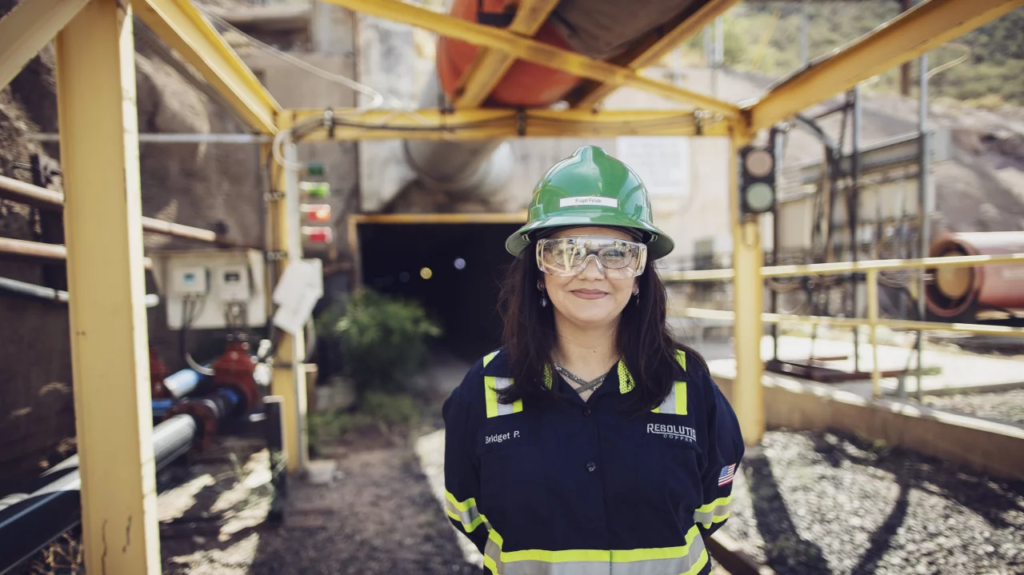At the Resolution Copper mine site, a joint venture between Rio Tinto and BHP, system upgrades are protecting employees, equipment, and the environment.
Edgar Cossio is a Senior Electrical Engineer with Rio Tinto. The firm is a global mining leader and, together with BHP Copper Inc., a partner in Resolution Copper Mining. The joint venture operates the Resolution Copper Project, a proposed underground mine 60 miles east of Phoenix, Arizona at the former Magma Mine site.
The ore deposit lies nearly 7,000 ft below the earth’s surface and represents one of the most significant untapped copper deposits today. Once fully operational, the mine will have the potential to supply nearly 25% of US copper demand.
“With everybody jumping on the EV (electrical vehicle) and electrification bandwagon, it is paramount for this project to get going as copper is one of the most critical minerals used,” Cossio explained. “Demand will continue to increase.”
EVs use four times more copper than conventional vehicles. The Resolution Copper Project has enough copper to manufacture almost 220 million EVs, or about half the global supply, by 2040. But at 1.3 miles underground, getting to that copper safely and sustainably is the top priority for Resolution Copper.
Ventilation, temperature, and water control are all essential to worker and equipment safety. “The temperatures down there can be brutal and sometimes even unbearable to work in. Imagine an underground sauna with temperatures between 90 and 140 degrees with around 100% humidity,” Cossio said. “So how can we maintain good working conditions where it’s safe enough for the employees and safe enough for the equipment to operate reliably?”
Further, as workers gain access to mining areas, water must be removed from the bedrock, treated, and monitored, a process known as dewatering. “We have around 500 to 600 gallons per minute of water intake in the mine. In any other place, you’re basically swimming in a lake,” Cossio explained. “For us to maintain the safety of employees and maintain assets, we have to make sure our water system is up to par and able to withstand those extreme conditions.”
Resolution Copper has been addressing these challenges as it prepares the mine site for future operations. The firm renovated two of the mine’s shafts, sinking them so they’re now among the deepest in the US. Additionally, they connected the two shafts, which improves both underground ventilation and employee safety by providing additional ways to enter and exit the mine.
Further, and as part of its sustainability commitment to reduce energy use, Resolution Copper has also started to upgrade its ventilation system including its chilling equipment. “The biggest thing we did was look at our control system. How can we automate this, make it more sustainable and environmentally friendly by implementing new technologies, such as replacing self-starter drives with VFDs for our chillers?” Cossio said.
The company installed Rockwell Automation PowerFlex® Variable Frequency Drives and adjusted the concentration of glycol used in its cooling systems. Glycol is an antifreeze ingredient that impacts system performance and efficiency. Ventilation upgrades will continue as mine development progresses.
For water removal, Resolution Copper implemented a multiple stage de-watering system that can pump out water at a rate of 600 to 700 gallons per minute. The water goes through a series of stations at various depths and then to an onsite water treatment plant before it’s ultimately recycled as potable water or diverted to an irrigation district where farmers use it for crops and cattle. Resolution Copper selected Rockwell Automation’s PlantPAx® Distributed Control System to manage this complex process.
“Because of the criticality of our de-watering system, especially with all the assets underground, PlantPAx seemed like the right solution to set us up for success in the future,” Cossio explained. “Right now, projects are in the development stages. PlantPAx gives us the necessary backbone and reliability to ensure the mine is set up correctly for the future. With process control from start to finish, it will help us protect employees and equipment while reducing downtime and increasing reliability.”
Meanwhile, by switching to VFDs as part of its initial ventilation and chilling system upgrades, Resolution Copper has seen a 5% increase in system efficiency and a 10% decrease in utility costs. “With self-starters you didn’t have any way to control the speed, even with the process control network, so typically a motor wheel will draw more amperage in the startup,” Cossio said. “With VFDs, we’re able to mitigate how much electricity is being pulled in the initial upsurge cycle, which is a lot less electricity.”
That energy reduction equals about $1 million a year, a ‘substantial saving’ that Resolution Copper plans to allocate toward other sustainability initiatives. “It’s paramount for this project to be environmentally conscious,” Cossio explained. “Our partnership with Rockwell Automation is key to that success, especially with all the upcoming technologies and everything else we’re trying to implement.”











